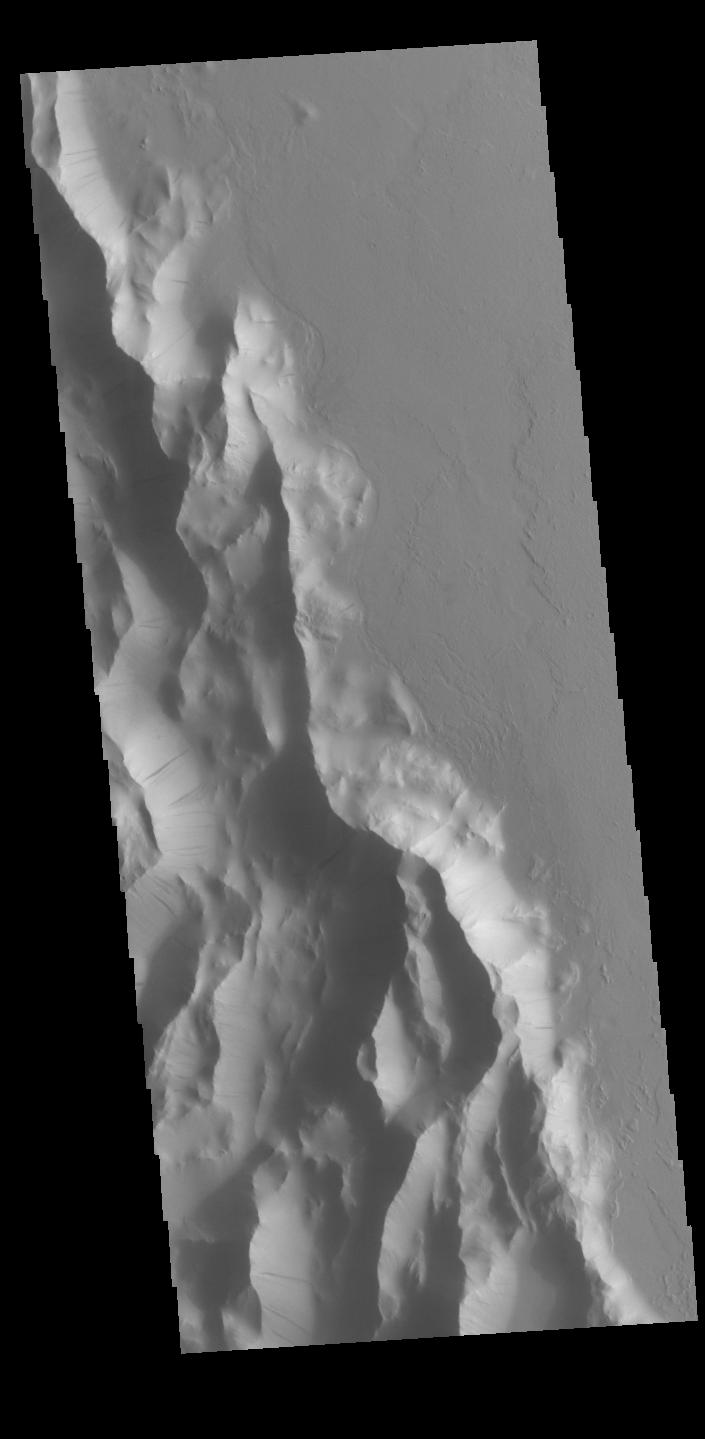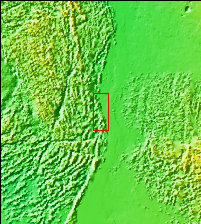
|
Lycus Sulci
- Click the image above for a larger view
- Full-Res JPEG (705 x 1439) (55.0 kB)
- Full-Res TIFF (705 x 1439) (660.7 kB)
Caption:

Context image
Lycus Sulci is a low lying area of ridges and valleys found to the northwest of Olympus Mons. It is not yet understood how this feature formed or how it relates to the formation of Olympus Mons itself. This VIS image shows the ridge forms that are typical of this region. Numerous dark streaks mark the slopes of the ridges. There are several suggested mechanisms to form these features. Two of the mechanisms are that the dusty surface has been altered to reveal darker rock beneath from motion of downward moving dust, or that the surface is darkening by fluid or other surface staining.
Orbit Number: 86418 Latitude: 26.7889 Longitude: 228.953 Instrument: VIS Captured: 2021-06-07 23:18
Background Info:
Please see the THEMIS Data Citation Note for details on crediting THEMIS images.
NASA's Jet Propulsion Laboratory manages the 2001 Mars Odyssey mission for NASA's Science Mission Directorate, Washington, D.C. The Thermal Emission Imaging System (THEMIS) was developed by Arizona State University, Tempe, in collaboration with Raytheon Santa Barbara Remote Sensing. The THEMIS investigation is led by Dr. Philip Christensen at Arizona State University. Lockheed Martin Astronautics, Denver, is the prime contractor for the Odyssey project, and developed and built the orbiter. Mission operations are conducted jointly from Lockheed Martin and from JPL, a division of the California Institute of Technology in Pasadena.
Cataloging Keywords:
| Name | Value | Additional Values |
|---|---|---|
| Target | Mars | |
| System | ||
| Target Type | Planet | |
| Mission | 2001 Mars Odyssey | |
| Instrument Host | Mars Odyssey | |
| Host Type | Orbiter | |
| Instrument | Thermal Emission Imaging System (THEMIS) | |
| Detector | ||
| Extra Keywords | Dust, Grayscale, Mountain, Thermal | |
| Acquisition Date | ||
| Release Date | 2021-11-05 | |
| Date in Caption | 2021-06-07 | |
| Image Credit | NASA/JPL-Caltech/ASU | |
| Source | photojournal.jpl.nasa.gov/catalog/PIA24955 | |
| Identifier | PIA24955 | |
